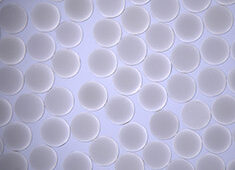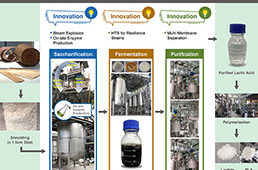A pentafoil molecular knot create in the laboratory. It is the most complex artificially created knot ever made. |
A
research team headed by Professor David Leigh of the University of
Edinburgh, U.K., and Academy Professor Kari Rissanen of the University of
Jyväskylä, Finland, have made the most complex molecular knot to date,
as reported in Nature Chemistry.
Knots
can be found in DNA, proteins and even in the molecules that make up
man-made plastics, where they often play an important role in the
substance’s properties (for example, 85% of the elasticity of natural
rubber is due to knot-like entanglements in the rubber molecules
chains).
However,
deliberately tying molecules into well-defined knots so that these
effects can be studied is extremely difficult. Up to now, only the
simplest type of knot—a trefoil knot—had been prepared by scientists.
Now Professor David Leigh’s team at the University of Edinburgh together
with Academy Professor Kari Rissanen at the University of Jyväskylä
have succeeded in preparing and characterizing a more complex type of
knot—a pentafoil knot (also known as a cinquefoil knot or a Solomon’s
seal knot)—a knot which looks like a five-pointed star.
Remarkably,
the thread that is tied into the star-shaped knot is just 160 atoms in
length—that is about 16 nm long. The Edinburgh researchers used a
technique known as “self-assembly” to prepare the knot in a chemical
reaction. The building blocks are chemically programmed to spontaneously
wrap themselves up into the desired knot. Making knotted structures
from simple chemical building blocks in this way should make it easier
to understand why entanglements and knots have such important effects on
material properties and may also help scientists to make new materials
with improved properties based on knotted molecular architectures.
A synthetic molecular pentafoil knot
Professor David Leigh’s team at the University of Edinburgh





